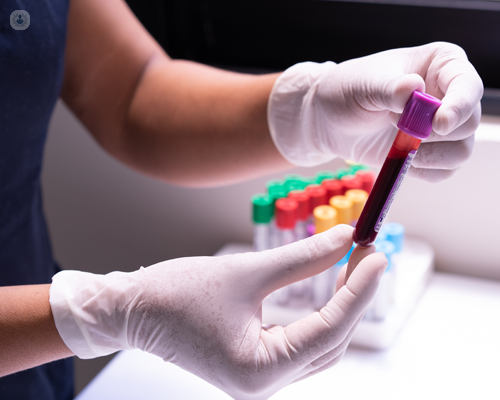Cyclosporine analysis
What is analysed?
Cyclosporine analysis involves measuring the concentration of cyclosporine in the blood to monitor its levels in patients undergoing cyclosporine therapy.

What does the result mean?
The result indicates the concentration of cyclosporine in the bloodstream. It helps assess the drug's therapeutic levels and potential toxicity.
Why undergo the analysis?
Cyclosporine analysis is essential to ensure therapeutic efficacy, prevent organ rejection (in transplant patients), and minimise the risk of adverse effects.
When to undergo the analysis?
Cyclosporine analysis is typically performed at regular intervals during treatment to monitor drug levels and adjust dosages as needed.
What sample is required?
A blood sample is required for cyclosporine analysis.
Is any prior preparation necessary?
No specific preparation is usually necessary before cyclosporine analysis. Patients should follow their healthcare provider's instructions regarding medication timing and fasting requirements.
How is it used?
Cyclosporine levels guide healthcare professionals in optimising therapy, ensuring adequate immunosuppression, and preventing organ rejection or drug toxicity.
What are the normal values?
Normal cyclosporine levels vary depending on factors such as the patient's medical condition, transplant type, and concomitant medications. Therapeutic ranges are established based on individual patient characteristics and treatment goals.
Cyclosporine levels reference table
| Cyclosporine Level | Interpretation |
| Varies | Therapeutic ranges determined by healthcare provider based on individual patient factors |
This table provides a general overview of cyclosporine levels and their interpretation, aiding healthcare professionals in managing cyclosporine therapy effectively.
What do altered values signify?
Altered cyclosporine levels may indicate subtherapeutic or toxic drug concentrations. Low levels may lead to inadequate immunosuppression and rejection, while high levels may increase the risk of toxicity and adverse effects.